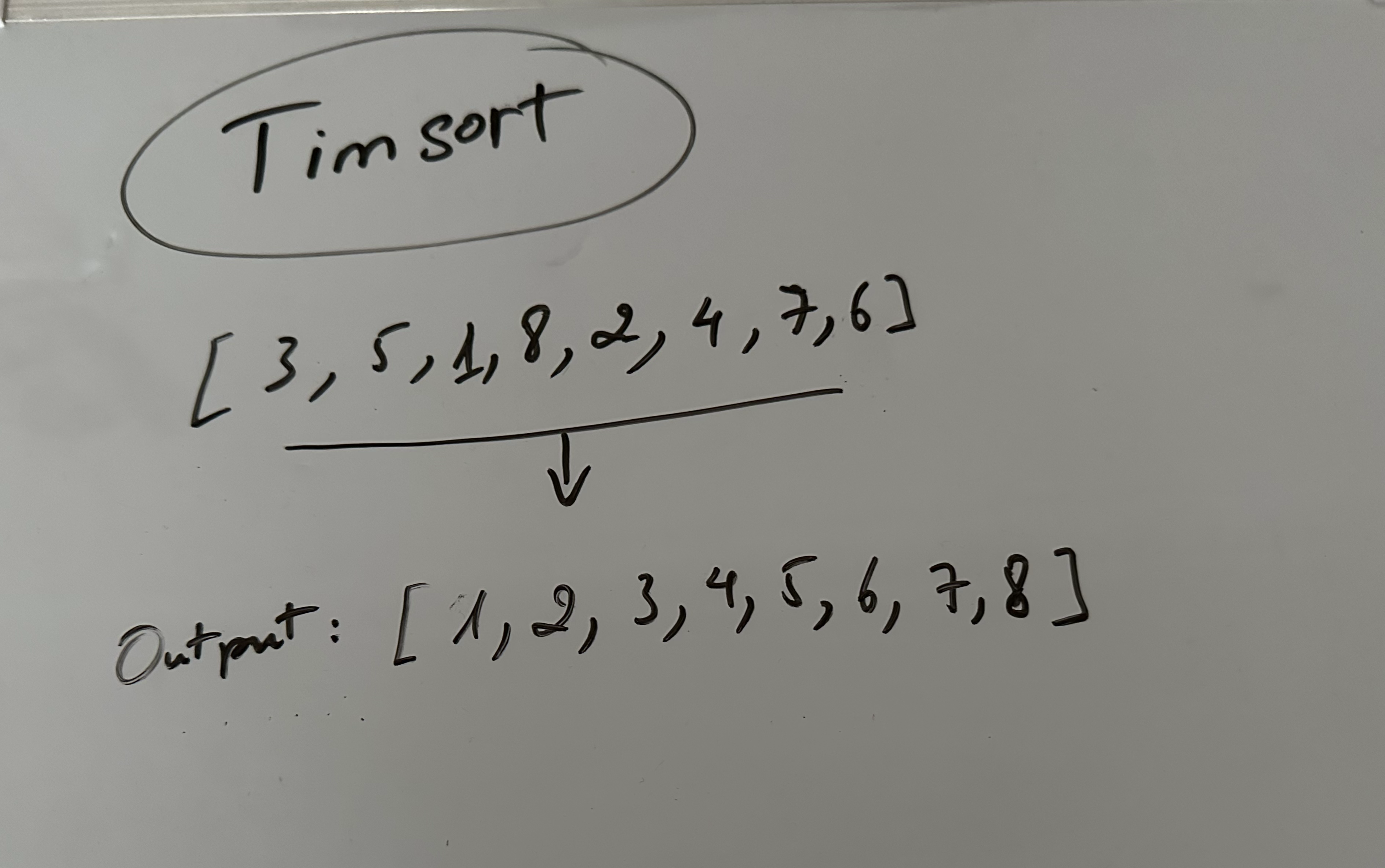[en] Timsort: A Versatile Sorting Algorithm in Swift

Timsort introduced in Swift 5, reigns as the default sorting algorithm for non-primitive arrays. This hybrid approach, blending Merge Sort and Insertion Sort, delivers optimal performance across various input sizes and distributions. This article dissects Timsort, exploring its intricate dance of efficiency and adaptation through detailed explanations, illustrative examples, and code snippets.
Timsort a hybrid algorithm conceived by Tim Peters, excels at sorting diverse data structures in Swift. It leverages the strengths of two well-known algorithms:
- Merge Sort: Conquers large datasets by splitting them repeatedly until individual elements remain, then efficiently merging sorted sub-arrays.
- Insertion Sort: Shines for smaller, nearly sorted sections, shifting elements into their rightful positions.
Key Features:
- Stable Sorting: Maintains the order of elements with equal keys.
- Adaptive: Tailors its approach based on data, switching between Insertion Sort (small runs) and Merge Sort (large runs).
- Minimum Run Length: Uses a configurable minimum run length (power of 2 between 16 and 128) to optimize merging.
- In-Place: Sorts arrays “in-place” for memory efficiency.
- Non-Recursive: Avoids stack overflow issues through depth management.
Timsort’s magic lies in its ability to:
- Identify naturally ordered subsequences: It scans the input array, seeking pre-sorted portions called “runs.”
- Utilize Insertion Sort: Quickly sorts these runs using Insertion Sort’s efficiency for small sequences.
- Merge with Strategy: Timsort applies Merge Sort principles, but cleverly merges runs based on specific rules to optimize performance.
- Depth Minimization: Limits merges to 64 runs at once, splitting larger merges into smaller sub-merges to prevent stack overflow.
Performance Advantages:
- Better Than Merge Sort for Partially Ordered Data: Timsort excels when a significant portion of the data is already sorted, efficiently leveraging existing order.
- Faster Than Insertion Sort for Large Datasets: Timsort merging approach is more efficient than applying Insertion Sort to the entire array.
Swift Implementation:
Timsort isn’t directly exposed as a function, but serves as the engine behind the sort() method on non-primitive arrays.
Examples:
Example 1: Partially Ordered Data
Consider an array with some pre-sorted sub-arrays:
let numbers = [3, 5, 1, 8, 2, 4, 7, 6]
numbers.sort() // Output: [1, 2, 3, 4, 5, 6, 7, 8]Timsort recognizes the pre-sorted subsequences: [3, 5], [1], [8], [2, 4], [7, 6]. It sorts these runs individually and then merges them efficiently, taking advantage of existing order.
Example 2: Small Array
With a handful of elements:
let letters = ["d", "a", "b", "c"]
letters.sort() // Output: ["a", "b", "c", "d"]Timsort likely applies Insertion Sort directly to the small array, as it’s more efficient than creating and merging runs for such a small dataset.
Example 3: Customizing Minimum Run Length
While Timsort uses a default minimum run length, you can adjust it through the sorted(by:) function:
let scores = [85, 90, 75, 60, 100]
scores.sorted(by: { $0 > $1 }, minimumRunLength: 4) // Sorts descending with minimum run length of 4The Benefits of Timsort: Why is it Swift’s Choice?
- Adaptive Performance: Timsort excels in diverse scenarios. For nearly sorted or small arrays, Insertion Sort shines. For larger, random data, Merge Sort takes over.
- Stable Sorting: Unlike some algorithms, Timsort preserves the original order of elements with equal keys, crucial for maintaining data integrity.
- Efficiency: Timsort boasts a worst-case complexity of
O(n log n), comparable to Merge Sort while offering better real-world performance due to its adaptiveness.
Conclusion: Timsort, the Unsung Hero of Swift Sorting
Timsort, tucked away within Swift’s sort() method, embodies the spirit of efficiency and adaptability. By understanding its underlying principles and witnessing its execution in action, you gain a deeper appreciation for this remarkable sorting algorithm that keeps your data neatly organized behind the scenes
